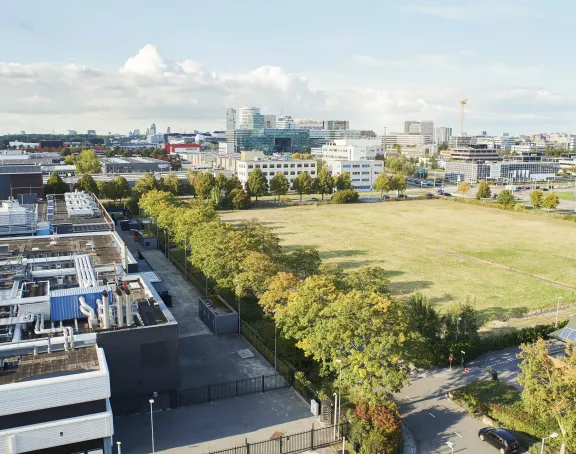Extended producer responsibility for textiles from 2025: what does this mean for textile producers in the Netherlands?
The Extended Producer Responsibility for Textiles Decree entered into force on 1 July 2023. This decree sets general rules for textile producers, making them responsible for the waste management of textile products. From 2025 onwards, producers will be responsible, also financially, for the preparation for reuse or recycling of the textile, after consumers have discarded it. Below we explain which obligations will apply to whom.
On 7 July 2023, the European Commission proposed amendments to the Waste Framework Directive. These amendments also deal with extended producer responsibility (EPR) for textiles. In this blog, we assess whether this proposal has implications for the Dutch decree that has just entered into force.
Which obligations will apply under the EPR for textiles?
The main Dutch obligations for EPR relate to reuse, recycling in general, and ‘fibre-to-fibre recycling’ of textile products. These obligations are set out in the Extended Producer Responsibility for Textiles Decree (the EPR Textiles Decree). This decree is based on Article 9.5.2 of the Environmental Management Act. Because this decree sets rules for EPR, the rules in the Extended Producer Responsibility Decree (the EPR Decree) also apply. A table in the explanatory notes to the EPR Textiles Decree lists the textiles to which the decree will apply:
| EPR applies | EPR does not apply |
| Consumer clothing (61 and 62) | Shoes (64), bags, belts (42) (non‑textile products) |
| Workwear (61 and 62) | Headgear (65) |
| Bedclothes (6302) | Blankets (6301), bedspreads (6304) |
| Table linen (6302) | Net curtains, curtains and blinds |
| Household linen (6302), such as towels and tea towels | Bags (6305), tarpaulins, canvas, tents (6306), floor cloths, dishcloths, cleaning cloths, dusters (6307) |
| Returned products (that were placed on the market) | Unsold products (that were not placed on the market) |
As of 2025, producers must "prepare for reuse or recycle" 50% of the textile placed on the market. ‘Preparing for reuse’ means, among other things, checking, cleaning and repairing. After this preparation, the products can be used again without any further processing being required. After being prepared for reuse, a discarded garment can be worn again by a new owner.
‘Recycling’ is the processing of products into other products, materials or fabrics. Those products, materials or fabrics can be reprocessed into other products after recycling. Examples of recycling include a garment being processed into raw materials that will be used in a new garment, or into insulation material. The recycled material need not be used in the same way as before it was recycled. It can also be ‘downcycled’, i.e. used as a lower-quality good than before. Recycled textiles therefore need not be reused as textiles. This is different for fibre-to-fibre recycling (see below).
A minimum of 21% of the textiles placed on the market must be prepared for reuse. A substantial part of this textile, namely 10%, may only be reused in the Netherlands. Fibre-to-fibre recycling means that the recycled materials must be reused as textiles. By 2025, fibre-to-fibre recycling will apply to at least 25% of textiles placed on the market.
All these obligations apply jointly and must be observed at the same time. Each year, the producer must meet all mandatory percentages for fibre-to-fibre recycling, for preparing for reuse, and for the combined category of preparing for reuse and recycling.
These percentages will increase every year until 2030. The percentages are based on the total weight of textiles placed on the market in the preceding year. ‘Placed on the market’ means first offered in the Netherlands for distribution, consumption or use. In addition to these percentages, a producer is also required to use "as much as possible" recycled fibre in its new products. Producers must report annually on their compliance with these EPR rules. They must submit this report to Rijkswaterstaat (the Dutch Directorate-General for Public Works and Water Management). Compliance can be enforced under administrative law. Criminal enforcement is also possible, because the Economic Offences Act also applies to the obligations under the EPR Textiles Decree.
To whom do the obligations apply?
The obligations apply to the "producer." This is not necessarily the party that makes the products, but rather the party that places the products on the market, according to the definition in the EPR Textiles Decree. ‘Placing on the market’ means offering for distribution, consumption or use within the Netherlands for the first time. Because ‘producer’ refers to the party that first offers products on the Dutch market, an importer may also be labelled a ‘producer’, according to the explanatory notes to the EPR Textiles Decree.
The obligations referred to above mean that producers will be responsible for collecting textile waste, preparing for reuse and recycling. In principle, these obligations apply to each individual producer. Producers may also opt to have their obligations fulfilled by a producer organization, rather than fulfilling the obligations themselves. Such an organization may fulfil the obligations on behalf of several producers, and is therefore responsible for the obligations, while the producers that have transferred their obligations are no longer subject to the obligations.
The EPR Decree stipulates that a producer organization receives a financial contribution from producers to carry out its activities. This contribution must cover the costs of the activities. It follows from the EPR Decree that the producer organization must "if possible" differentiate the financial contribution among producers. Sustainability aspects play an important role in this differentiation.
How will it work out in practice?
The government describes in the explanatory notes to the EPR Textiles Decree how the current textile collection system works and how it expects the system to change. Municipalities are responsible for collecting household waste. As of 2025, they must collect textile waste separately. Currently, almost all municipalities already collect their textile waste separately. Under the current system, companies must hand over their textile waste to waste processors, which incinerate the vast majority of the textiles they receive. Parliamentary questions have been raised about the relationship between municipalities and companies in EPR systems: in some EPRs, there is discussion between municipalities and producers about collection responsibilities. In response to those questions, the Minister of Infrastructure and Water Management has promised to investigate the role of municipalities in EPR. She will report on this investigation after the summer.
The Dutch government expects that few producers will meet their EPR obligations independently: it expects that one or more producer organizations will become responsible for collection and processing. An EPR Textile Foundation was established in 2022. Producers may join this producer organization. Possibly, more organizations will be established. Larger suppliers under the EPR Textiles Decree are also free to set up their own system to meet their EPR obligations.
Relationship between European and Dutch law on EPR textiles
A noteworthy aspect of the EPR Textiles Decree is that it is the first Dutch administrative decree for EPR that is not based on a European EPR decree. All other administrative EPR decrees are implementations of European EPR decrees, such as the EPR for end-of-life vehicles or packaging. This is not only relevant as background information, but may also be relevant in practice, because a European proposal for an EPR decree on textiles was published shortly after the EPR Textiles Decree came into force. This proposal aims to amend the Waste Framework Directive (WFD).
At this time, it is not possible to say when the amendment will take effect and whether the eventual amendment will have the same content as the proposal. Because it is uncertain what the amendment will ultimately look like, and because this blog is focussed on Dutch law, we will describe the proposal only in outline. It is in any event noteworthy that the European EPR decree for textiles differs from the Dutch one on some important points.
Article 22a of the proposal requires Member States to introduce an EPR decree for textiles. Based on this article and the proposed Annex IVc, it appears that the scope of the European EPR differs in part from that of the Dutch EPR Decree. The European decree applies to other types of textiles and seemingly has a wider scope of application. It should also be noted that the proposal in Article 22c requires individual producers to transfer their responsibilities to a producer organization. This differs from the Dutch decree, in which this choice is left to the producer. The proposal also stipulates more obligations for producer organizations compared with the Dutch decree. For example, a producer organization must provide information to consumers about the impact of textiles on the environment, and the role of consumers in preventing waste (Article 22c(13)). The decree furthermore requires Member States to ensure that textiles are collected separately as from 1 January 2025. This requirement can also be found in the current WFD, and Article 22d further elaborates on how this separate collection should take place. The European proposal does not set mandatory recycling percentages. That important part of the EPR Textiles Decree remains untouched.
In sum, there are important differences between the European proposal and the Dutch EPR Textiles Decree. The European proposal may change, but it is certainly conceivable that these differences will remain when the amendment to the Waste Framework Directive is adopted. This difference between European and Dutch law may also have consequences in practice. Especially relevant is the question whether producers have the choice to meet their EPR obligations themselves, or whether they are always required to outsource them to a producer organization. It is important for textile producers to continue to comply with the decision made by the Dutch and European legislators.
Conclusion
The EPR Textiles Decree recently came into force. Its rules will apply from 2025 onwards. Textile producers should prepare for this. Shortly after the Dutch decree came into force, a European EPR for textiles decree was proposed. That proposal differs significantly from the Dutch EPR Textiles Decree. In the run-up to 2025, textile producers would do well to keep up with the eventual choices of the Dutch and European legislators about EPR for textiles.


